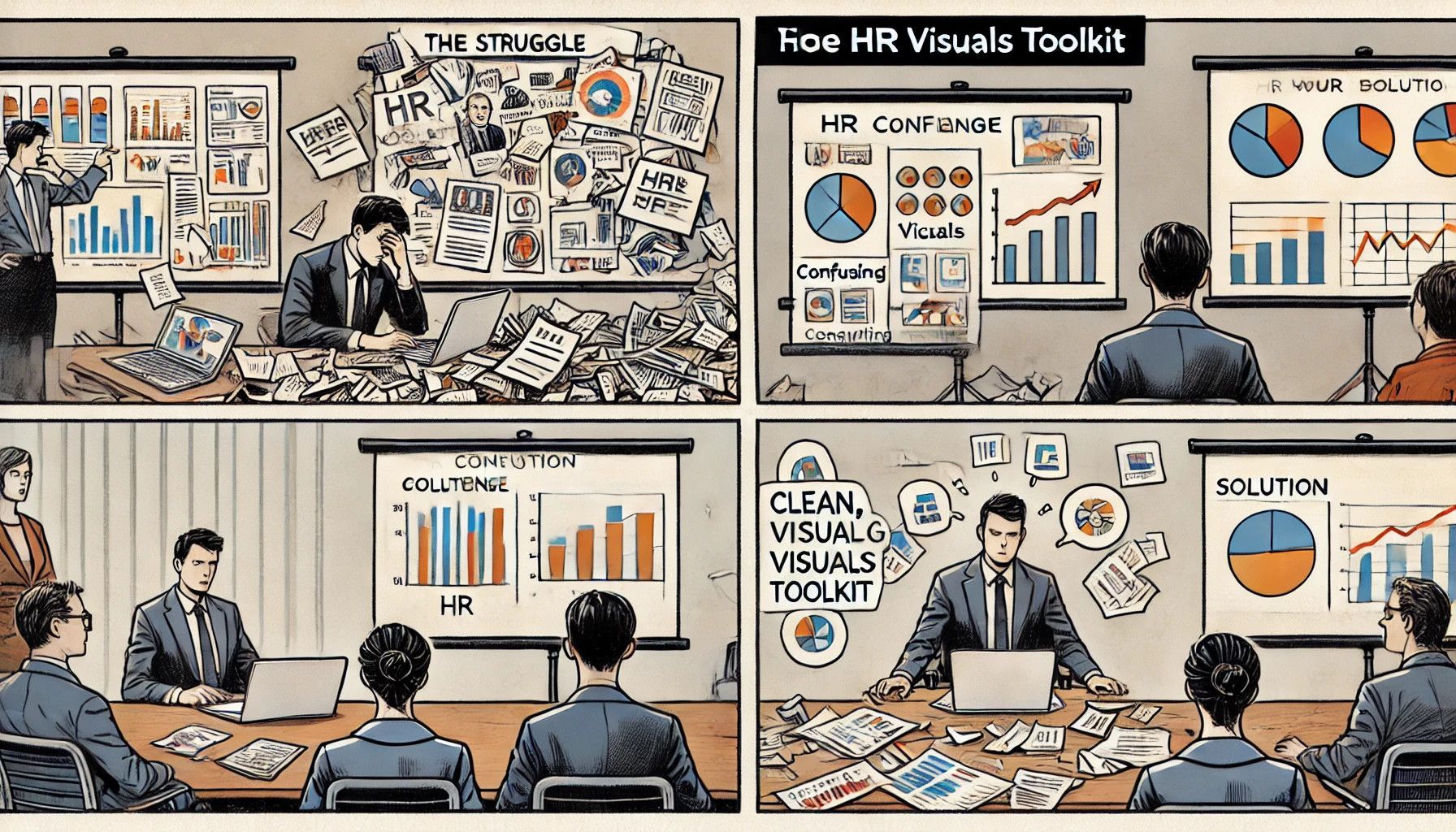Outside-In HR: Aligning People Strategy with Customer Value
In today's competitive landscape, businesses are constantly seeking ways to gain an edge. However, while employee engagement and satisfaction remain important, they are not the ultimate arbiters of business success.
Too often, HR strategies are developed in a vacuum, focused inward on employee needs without a clear connection to the external customers of the business. This is where in my opinion, a paradigm shift is needed. I'm going to call it an "Outside-In HR" approach. This approach prioritizes customer needs and integrates them into the core of the people strategy. A truly effective people strategy directly impacts customer Net Promoter Score (cNPS) and overall customer value, requiring HR to be deeply embedded in the customer experience.
The Limitations of an Inward-Focused People Strategy
Traditional HR often operates under the assumption that happy employees automatically translate to happy customers. While a positive work environment is undoubtedly beneficial (as Simon Sinek famously said "customers will never love a company until its employees love it first"), it doesn't guarantee customer satisfaction. HR departments dedicate resources to improving employee morale, offering perks, and implementing engagement programs. However, these efforts can be misdirected if they don't align with delivering exceptional customer value. According to a Gallup study, only 30% of U.S. employees are engaged at work. This suggests that even with substantial investments in employee engagement, a significant portion of the workforce may not be fully contributing to customer satisfaction. [Gallup, "State of the Global Workplace Report, 2023"]
Understanding the Customer Value Chain
The customer journey is a complex series of interactions. Each interaction presents an opportunity to either strengthen or erode the customer relationship. Employees directly influence many of these touchpoints. This emphasizes the importance of understanding the direct link between employee behaviors and customer outcomes. For example, a customer service representative's empathy and problem-solving skills directly impact a customer's perception of the company. Similarly, a salesperson's ability to understand a customer's needs and offer tailored solutions influences their purchasing decisions. By analyzing the customer journey and identifying the key touchpoints influenced by employees, HR can develop targeted interventions to improve the customer experience. Employee behaviors, directly shaped by HR initiatives, play a crucial role in driving cNPS, as influenced by metrics like speed, accuracy, solutions focus, and empathy.
Case Studies: HR Impact on cNPS
My favourite go-to example of a great customer service company is Zappos. Renowned for its customer service, Zappos empowered its employees to go above and beyond to meet customer needs, even if it meant incurring additional costs. This customer-centric approach was ingrained in Zappos' culture through its hiring practices, training programs, and performance management system. As a result, Zappos consistently achieved high cNPS scores and in returned experienced strong customer loyalty. In contrast, companies where employees are not adequately trained or incentivized to provide excellent customer service, (especially if they are not considered "front line customer facing" staff) often experience higher customer churn which then gets blamed on economic conditions, competition etc, etc, etc. A Harvard Business Review study backed up the notion that companies with poor customer service often experience higher customer churn rates and lower profitability. [Harvard Business Review, "The Value of Customer Service"]
Embedding HR in the Customer Ecosystem
To truly understand customer needs, HR professionals must step outside their traditional defined roles and engage directly with customers. Imagine every HR professional as a customer advocate, championing their needs and integrating their feedback into HR strategy. Here are some example strategies that can help. HR staff can participate in customer service interactions to observe firsthand the challenges customers face. They can also join sales calls to understand customer needs and pain points. Product testing allows HR to gain insights into the customer experience and identify areas for improvement. Most importantly, HR must actively analyze customer feedback data to identify trends and patterns. This direct engagement provides HR with valuable insights that can inform talent acquisition, training, performance management, and other HR initiatives.
Developing a Customer-Centric People Strategy
A customer-centric people strategy requires a fundamental shift in how HR operates, because it impacts every aspect of the employee lifecycle, from talent acquisition to performance management. Here's how:
- Talent Acquisition: Focus on hiring candidates with a proven track record of customer-centric behavior and empathy. Incorporate behavioral assessments and situational interview questions to gauge a candidate's ability to handle customer interactions effectively. Hire for will, train for skill.
- Training and Development: Invest in training programs that equip employees with the knowledge and skills to deliver exceptional customer experiences. This includes training on communication skills, problem-solving, product knowledge, and customer service best practices. You sometimes hear companies who say "but what if we train them and they leave"? Well, flip that on its head and think instead, "what if you don't train employees, and they stay"? What does that do to your customer experience?
- Performance Management: Align employee goals and OKR's with customer satisfaction and value creation. Reward employees who consistently exceed customer expectations and contribute to positive customer outcomes.
- Recognition and Rewards: Incentivize customer-centric behaviors by recognizing and rewarding employees who go the extra mile to delight customers. Publicly acknowledge and celebrate customer success stories to reinforce the importance of customer-centricity. Particularly those whose day job is not frontline customer service.
HR as a Business Partner: Financial Literacy and Customer LTV
To be a truly effective business partner, HR must understand the company's financial performance and how it relates to customer value. This includes understanding key metrics such as customer lifetime value (CLTV), customer acquisition cost (CAC), and cNPS. CLTV predicts the total revenue a business can reasonably expect from a single customer account. HR can use this data to justify investments in training and development programs that improve customer retention and increase CLTV. By demonstrating the financial impact of HR initiatives on customer value, HR can gain greater credibility and influence within the organization. This also requires HR to develop dashboards that track the impact of people strategies on cNPS and key business outcomes, allowing them to measure and report on the ROI of their initiatives.
The Future of HR: Driving Business Value Through Customer-Centricity
The true value of HR lies in its ability to drive business value through customer-centricity. By embracing an Outside-In HR approach, HR can transform itself from a support function to a strategic driver of customer success. To achieve this, HR leaders must cultivate a customer-centric mindset, embed themselves in the customer ecosystem, and develop people strategies that directly impact customer value. HR leaders need to champion customer-centricity as a core competency. Encourage all HR professionals to actively seek out customer feedback and use it to inform their decisions. As technology continues to evolve, HR can leverage data analytics and artificial intelligence to gain deeper insights into customer needs and personalize the employee experience to better serve customers. The evolving role of HR in a customer-obsessed world demands a proactive and strategic approach to people management, where customer value is at the heart of every decision. And that's something to think about.
What's your take on this? Add your questions, comments, smart remarks in the comments below, and let's keep the conversation going! If you feel you're getting value from this blog, share with a fellow professional that could use these insights. If you don't feel you're getting value, let us know how we can do better.
Ready to transform your business through your people agenda? Connect with us at #MDataConsultants and let us help you transform your business- https://www.linkedin.com/company/mdata-consultants/
#HR #CustomerExperience #PeopleStrategy #Leadership #BusinessGrowth #OutsideInHR






